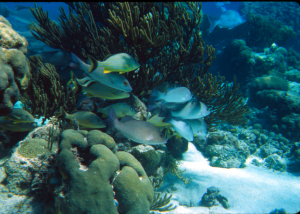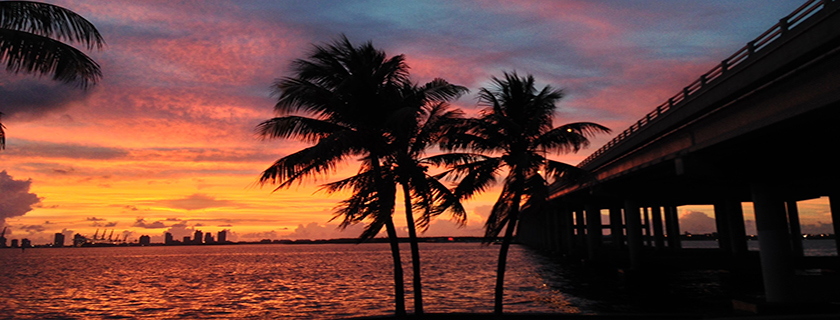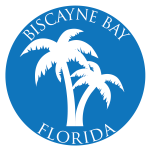Biscayne Bay, Florida
Biscayne Bay is a shallow, clear water bay centered within the large metropolitan area of Miami on Florida’s lower southeast coast. The Biscayne Bay Habitat Focus Area extends nearly 50 miles from northern Dumfoundling Bay to southern Barnes Sound and Manatee Bay. It also includes the coral reef tract that runs parallel to the bay, extending northward from the Florida Keys. Biscayne Bay and its reef support an astonishing array of marine species and are favorite destinations for recreational pursuits such as fishing, boating, kayaking, snorkeling, swimming, and diving. Biscayne Bay is an iconic setting for a growing international urban center, and many community activities take place on its waters.
Water-based tourism and recreation are major sources of revenues, jobs, and income for the Biscayne Bay and Miami area. Marine species and water-based recreational activities here depend upon clean, clear waters and a healthy bay and reef.
Threats
Three main threats to Biscayne Bay habitat are:
- Declining water quality
- Loss of reliable freshwater inflow
- Physical damage
Concern about declining water quality was a major factor leading to the nomination of Biscayne Bay as a NOAA Habitat Focus Area. Scientists and resource managers monitoring the Bay worry that it may soon reach a “tipping point” beyond which anything could be done to stop the vicious cycle of algal blooms and the damage they cause to bottom habitat and communities.
NOAA has considerable involvement in Biscayne Bay research and conservation. We’ve partnered with other federal, state, and local agencies in the Comprehensive Everglades Restoration Project: an effort to restore south Florida ecosystems and connected coastal waters. NOAA also works with Biscayne National Park and Miami-Dade County to monitor water quality, and physical and biological parameters in Biscayne Bay.
Objectives
- Understand major sources of nutrients that contribute significantly to algal blooms in Biscayne Bay and work with resource managers on policies and management approaches to improve water quality and habitat conditions.
- Improve freshwater inflows to enhance habitat conditions for living marine resources.
- Support and enhance recovery of protected species and sustainability of fishery species and protect and restore their habitat.
- Increase public awareness of the ecological, economic, and social benefits of the Biscayne Bay ecosystem and increase citizen involvement in conservation activities.
Collaboration
NOAA partners with major resource management agencies and non-governmental groups to address joint objectives in the Biscayne Bay Habitat Focus Area. Our partners include:
- Miami-Dade County
- Florida Department of Environmental Protection, Biscayne Bay Aquatic Preserves
- Biscayne National Park
- Miami Waterkeeper
- Florida Sea Grant
- Tropical Audubon Society
- Clean Water Action
- National Parks Conservation Association
- University of Miami
- Florida International University


